#of darkness and luminescence
Text
“I’m pretty sure he told you - I’m exclusively his.”
Harry Potter about the Dark Lord, ch.17
(coming soon to your local Ao3 scribbler's work)
34 notes
·
View notes
Text
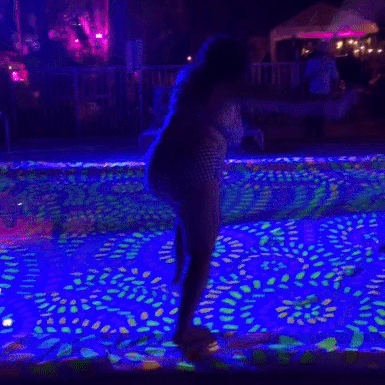



🪻 ~ Fantasy Pool ~ 🪻 (truebluemmie)
(Credit if you use) (ko-fi)
#pool#blacklight#poolcore#neon#irl people#swimming pool#pool stim#neon colors#black light#bright colors#neon stim#flashing#slight flashing#watercore#neon blue#water#glow in the dark#glow in the dark stim#poolrooms#pool rooms#fluorescent#luminescent#blacklight stim#black light stim#luminescence#uv light#uv aesthetic#black light aesthetic#purple#purple stim
225 notes
·
View notes
Text


Fluorescing minerals in white light (left) and under UV rays (right). From left to right; top: aragonite, calcite center: fluorite, halite bottom: willemite
#aesthetic#minerals#uv#uv light#uv glow#glow#glowing#glow in the dark#science#sciencecore#luminescence#stones#rocks#geology#aragonite#calcite#fluorite#halite#willemite
98 notes
·
View notes
Text

Glow Crab
Quite a curious crustacean.
Source
Creator: Tail-Biter
#lego#bionicle#animal#animal shape#rahi#aquatic#sea creatures#aquatic rahi#aquatic animals#arthropod#crustacean#crab#luminous#luminescent#glowing#multiple limbs#multiple legs#antenna#feelers#glow in the dark#translucent
123 notes
·
View notes
Text
I haven't had an all black dog in such a long time. So when I tell you Blue has a high-vis reflective collar with a bell and an extra collar that lights up, it's because she will slip into the Twilight Realm the second she walks into a shadow.
#jackal's journal#mandatory bio-luminescence added for my dumb monkey eyes#you CANNOT see her in the dark
56 notes
·
View notes
Text

Oh how I sit here unsure of how to approach, waiting with baited breath.
Your frantic movements mollified for a short interval.
The paroxysm of my feelings are eating away my mind. Was it too much? How do you even feel?
I feel I am too cowardly to approach.
#diroxide art#kirby#kirby art#galacta knight#Aurora Knight#galacta doesn’t know how to handle romantic feelings#I struggled to depict the scene I saw in my head#just imagine wisteria trees#and a dark grove/forest but illuminated with these pretty flowers and luminescent water
76 notes
·
View notes
Text
Anybody half a year or so ago when I was talking about getting green roots whenever my then upcoming black hair would start growing out? Well, the roots were finally long enough so here's the result :3





#had to ruffle the hair a bit so you could see it xD#otherwise it looks black brown but with green stribes xD#I am not mad about it tbh#ended doing for a deeper green since I feared my roots (even bleached) was too dark for the luminescent green :'3#and for the curious: this is what my moustace looks like now WITHOUT mascara :3#micahs foolery#me
14 notes
·
View notes
Text
People are leaving some very kind words on that post I made on the depth chart and the significance of tpwbyt ending at the depth it does (tysm!!) so while I do not have a concrete answer on the other depth numbers beyond a basic assumption, I will add two more things
1. The depth chart starts at 914m, with Atlantic.
Dozens of different factors contribute to how deep light can penetrate in water, but by definition the Mesopelagic Zone is specifically the transition between where ~1% of sunlight can still reach the water and where it can no longer be seen at all. It begins at a depth of 200m and ends at 1000m.
In other words, with Atlantic, 914m below the surface of the ocean, Vessel's starting the album already in the absolute last vestiges of where any light from above could possibly reach him.
2. The underwater speed of sound reaches a minimum around that depth as well.
This also varies greatly by composition and conditions but between about 600 and 1200m, with an axis usually depicted at around 1000m, various oceanic conditions align to allow sounds to travel up to several thousands of kilometers with little change before dissipating.
So, if he was singing loud enough, at similar depths you would theoretically still be able to hear Vessel's voice from halfway across the ocean. As could any other creature occupying the same range, provided it has the means to hear it!
#think of it like a whale's song :)#do i think it was on purpose? doubtful. see linked post. but am i making a point of it anyways? ABSOLUTELY#sleep token#of course there is still a lot of light you can find in the aphotic ocean! it would just usually be coming from bio-luminescent organisms#imagine if you were surrounded by cold dark water and the only light you could see was from Sleep's lures?
17 notes
·
View notes
Note
Hello :D :) This might be quite specific :o But would it be at all possible to get a starboard done up for an introject of the "Wake Up & It's Over" album? Who is Wilbur presenting :) Themes and colours are brown, red, black or any colour from the lighting in tour photos. Could we get some slimes and neon or luminescent visuals? :o This is our first time ever sending in an ask for one of these :D Our host dosnt usually let me :) I hope your well and thank you very much :D :) -Casper o/





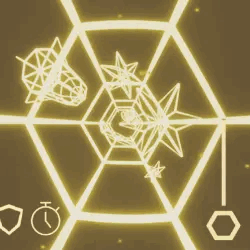

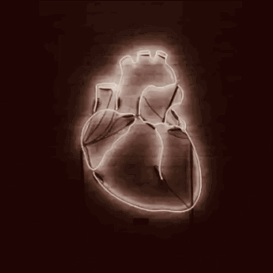
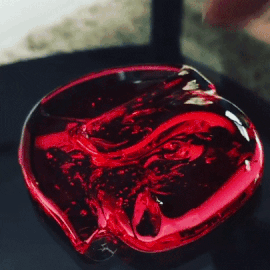

“Wake Up & It’s Over” (Lovejoy, album) with brown, red, and black neon, lights, and slime!
🔻|🟫|🔻
🟫|🔻|🟫
🔻|🟫|🔻
#weheartstims#stimboard#wake up and its over#wake up & its over#lovejoy#introject#fictive#red#brown#black#lights#luminescent#flashing lights#(jic)#slime#neon#hands#glowing#glow-in-the-dark
14 notes
·
View notes
Text

My Glowing Room!
As many of you may already know, I am obsessed with glow in the dark stuff, Ghost and Killstar among other things.
I have been working on converting everything in my room to glow in the dark in some capacity.
***Please note that I didn't draw these images, I just made them glow in the dark. 😊






Some of my Killstar Kreepture Collection that also glows! 🖤

#goth#gothic#funko#ghost#horror#nameless ghouls#papa emeritus#tobias forge#cardinal copia#killstar#dolls kill#Baphomet#mothman#angel of death#neon#glow#glow in the dark#glowing#art#luminous#luminescent
3 notes
·
View notes
Text

fantasizing about making this weapon from Returnal 😍
#the organic biological feel#the dark watery aesthetic#the fact it looks like an angler fish carcass#the luminescence!!!!!#returnal#video game#selene#cosplay#prop making
2 notes
·
View notes
Text
Chapter 10 in a nutshell:
Harry: I prefer Tom.
Voldie: *insanely jealous of himself* ...okay.
....coming soon to your local Ao3 scribbler's work.

22 notes
·
View notes
Text
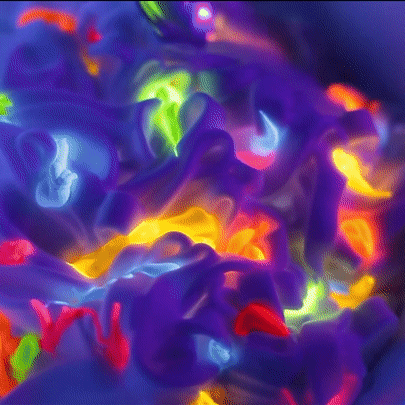


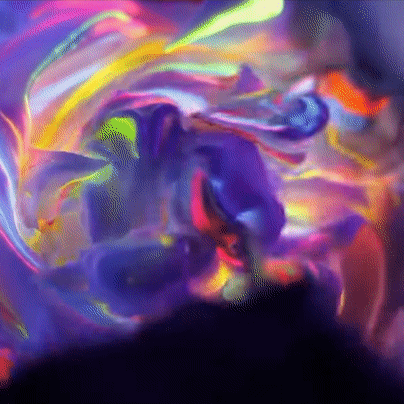
🎊 ~ Confetti Cream ~ 🎊 (shimmeriwoo)
(Please credit if you use :3) (ko-fi)
#ultraviolet#blacklight stim#glowcore stim#blacklight rainbow#black light#glow in the dark#cream stim#foam stim#glowing#glowcore#glowwave#glow stim#rainbow#rainbow stim#blacklight#fluorescent#luminescent#neon glow#hands#glow#glowing effect#glowy#glow aesthetic#glowinthedark#neon colors#black light stim#luminescence#uv light#uv aesthetic#black light aesthetic
571 notes
·
View notes
Text
someone please talk me out of giving ren tapetum lucidum.
#𝟎𝟎𝟒 : 𝘵𝘩𝘦𝘺 𝘴𝘢𝘺 𝘺𝘰𝘶 𝘶𝘴𝘦𝘥 𝘵𝘰 𝘣𝘦 𝘴𝘰 𝘬𝘪𝘯𝘥. ◟ hc .◝#( LISTEN... LISTEN... HEAR ME OUT... his eyes already glow when he's channeling an element... )#( i just think he should be allowed to glow a little by default. )#( it's not ACTUALLY tapetum lucidum but the effect is more or less the same. )#( because his body runs on that self replenishing source of electro (magic battery™️) so he's technically always elementally infused. )#( it's just ordinarily so miniscule it's not even worth mentioning. )#( can't spark a reaction can't do anything with it. )#( but consider a very very subtle perpetual glow in his eyes only visible when he's in the dark.... )#( embrace the cat energies )#( edit -- it would also extend to his ley lines / ''tattoos'' as well though they would be even harder to notice any luminescence from --#because they're covered with that dark semi-transparent fabric. )
19 notes
·
View notes
Text
What if the reason ghost hunter shows never see any ghosts is because ghosts are faint and so they are only visible in super bright light?
And they are all like 'aw tight somebody's finally gonna see me' and then these guys turn off all the ding dang lights!
#especially funny to me with places like Alcatraz where like. I've been there and they have lights.#the place has been abandoned as a prison but it's not an abandoned location. it's a tourist destination it's very well lit#I'm just saying If ghosts are not inherently luminescent then they would be harder to see than a normal person in the dark#also I don't believe in ghosts. or at least they don't believe in them .... until I see something moving in a dark forest#and then my immediate response is like well. guess I was wrong#original#i know why they turn off the lights for a ghost hunting show it just seems like someone should try out some real strong LEDs
3 notes
·
View notes
Text
Understanding Photo-luminescent Paint: Benefits, Usage, and Applications

Photo-luminescent paint, often referred to as glow-in-the-dark paint, has been gaining attention in various industries due to its unique properties and wide range of applications. This paint absorbs ambient light and emits it in darkness, providing a reliable source of visibility in low-light conditions. This article delves into the benefits, usage, and specific applications of photo-luminescent paint, while also integrating relevant information about silicone sealant, construction sealant, and other related products.
What is Photo-luminescent Paint?
The photoluminescent paint contains phosphorescent pigments, which have the ability to absorb light and then re-emit it slowly over time. This re-emission can last for several hours, making it an effective means of illumination in the absence of other light sources. Commonly used pigments include strontium aluminate, which offers a longer-lasting and brighter glow compared to older zinc sulfide-based pigments.
Benefits of Photoluminescent Paint
Safety and Visibility:
The primary benefit of photoluminescent paint is enhanced safety. It provides a clear, visible path in emergency situations, such as power outages or fire evacuations, guiding individuals to exits and reducing panic.
Energy Efficiency:
Unlike electrical lighting, photoluminescent paint does not require an external power source. It absorbs and stores light energy during the day and releases it at night, leading to energy savings and lower maintenance costs.
Durability:
This paint is highly durable and can withstand harsh environmental conditions, making it suitable for both indoor and outdoor applications.
Environmental Friendliness:
Photoluminescent paint is non-toxic and free from harmful substances, making it an environmentally friendly choice for various applications.
Applications of Photol-uminescent Paint
Photoluminescent paint is used in various sectors, including:
Emergency Exits and Pathways:
Marking exit routes in buildings, stairways, and corridors to ensure safe egress during emergencies.
Traffic and Road Safety:
Highlighting road signs, pedestrian crossings, and curbs to improve nighttime visibility.
Marine and Aviation:
Ensuring clear visibility of pathways and safety signs on ships and aircraft.
Industrial Settings:
Enhancing safety in factories and warehouses by marking equipment, hazards, and evacuation routes.

How to Use Photoluminescent Paint
Surface Preparation:
Ensure the surface is clean, dry, and free from grease or oil. Proper preparation improves adhesion and durability.
Application:
Apply the paint using a brush, roller, or spray. Multiple thin coats are recommended for optimal performance. Each coat should be allowed to dry before applying the next.
Charging:
Expose the painted surface to a light source to charge the photoluminescent pigments. Natural sunlight is ideal, but artificial lighting can also be effective.
Determining the Quantity Needed
The amount of photo-luminescent paint required depends on the surface area to be covered and the desired thickness of the paint layer. As a general rule, one gallon of photoluminescent paint can cover approximately 300-400 square feet with one coat. For critical applications, consider consulting with the paint manufacturer for precise calculations based on specific product formulations.
Integration with Construction Sealants
In construction, it is often necessary to use sealants to ensure structural integrity and weatherproofing. Silicone sealant, construction sealant, and construction joint sealant are commonly used products that can complement the use of photoluminescent paint.
Silicone Sealant:
Known for its flexibility and durability, silicone sealant is ideal for sealing gaps and joints in a variety of substrates. It can be used alongside photoluminescent paint to ensure that painted surfaces are also properly sealed and protected from moisture.
Construction Sealant:
This term encompasses a range of sealants designed for various construction applications. When using photoluminescent paint in construction projects, it’s important to select a compatible construction sealant to ensure cohesive results.
Construction Joint Sealant:
Specifically formulated for sealing joints in construction, these sealants ensure that there are no gaps that could compromise the structural integrity of a building. Using construction joint sealant in conjunction with photoluminescent paint can enhance both the safety and longevity of building components.

Importance in Construction
In cities like Melbourne, where safety and efficiency are paramount, incorporating photo-luminescent paint into construction projects can significantly enhance building safety. For instance, marking pathways and emergency exits with photoluminescent paint can ensure that in case of a power outage or emergency, the occupants can safely navigate to exits. This is particularly beneficial in high-traffic commercial buildings and residential complexes.
Moreover, combining photo-luminescent paint with high-quality construction adhesive sealant can provide a comprehensive safety solution. The sealant ensures that the paint remains effective and adheres well to surfaces, even in challenging conditions.
Conclusion
Photoluminescent paint is a versatile and beneficial tool for improving safety and visibility across various applications. Its ability to provide illumination without an external power source makes it a valuable addition to emergency preparedness plans. When used in conjunction with construction sealants, it can enhance both the functionality and longevity of building projects. By understanding how to properly apply and integrate photoluminescent paint, construction professionals can ensure safer, more efficient environments.
#sealants#construction#silicone sealant#photo-luminescent paint#silicone adhesive#caulking#glow in the dark#acrylic
0 notes